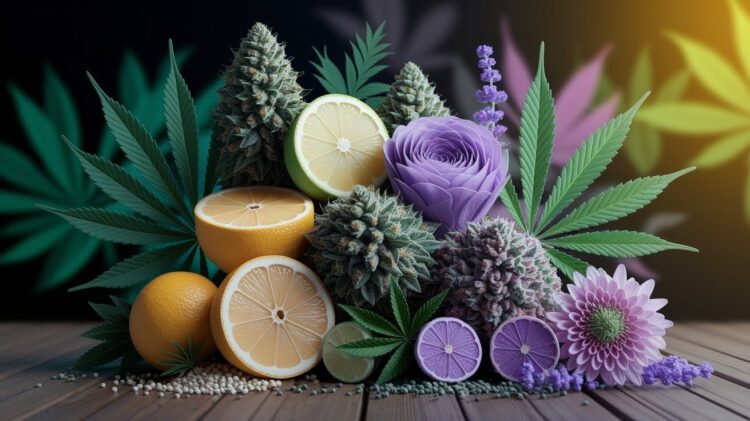The smell of lemon in your cannabis strain isn’t accidental. Neither is that pine scent or earthy aroma that makes you feel relaxed before you even consume anything.
I’ve spent years studying how terpenes shape your cannabis experience beyond just THC and CBD levels. These organic compounds determine why one strain energizes you while another puts you to sleep.
This comprehensive guide covers over 13 major terpenes and their specific effects. You’ll learn how myrcene creates “couch-lock,” why limonene boosts your mood, and how pinene sharpens your focus.
Terpenes are aromatic oils found in every plant on Earth. In cannabis, they work alongside cannabinoids to create the “entourage effect.” Each strain’s terpene profile determines your unique experience – same THC percentage, different terpenes, completely different effects.
The Science Behind Terpene Effects
Most people think terpenes just smell nice. They’re wrong. These compounds actively change how cannabis affects your body and mind.
Beta-caryophyllene breaks all the rules. It’s the only terpene that directly binds to your body’s CB2 receptors. This makes it act almost like a cannabinoid.
Other terpenes work differently. They don’t bind to receptors directly. Instead, they modify how THC and CBD affect you.
Think of terpenes as conductors in an orchestra. They don’t make the music alone, but they direct how all the instruments play together.
This is called the entourage effect. Your cannabis strain isn’t just THC plus terpenes. It’s a complex recipe where each ingredient changes how the others work.
Dominant terpenes lead the show at 0.5-2% of the plant. Secondary terpenes add subtle notes at lower concentrations. The ratios matter more than individual amounts.
Temperature destroys your investment, though. Each terpene has a boiling point at which it breaks down. Light a joint and you’re burning money. Vaporizers preserve what you paid for by staying under 400°F.
Comprehensive List of Primary Terpenes and Effects
Myrcene is the most common cannabis terpene that creates “couch-lock” sedation while enhancing how other cannabinoids absorb into your brain.
1. Myrcene
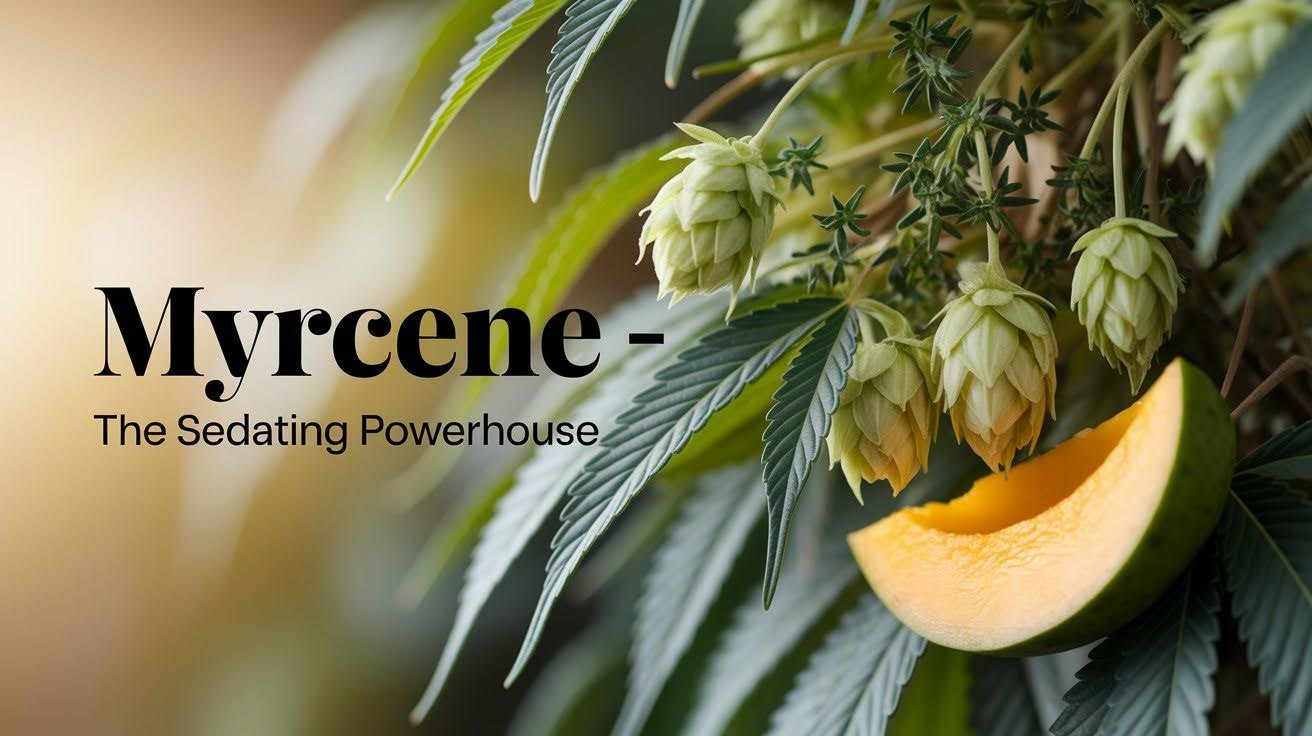
Myrcene runs the show in most cannabis strains. It’s the most common terpene you’ll find at dispensaries. If your weed smells earthy and herbal, myrcene is probably calling the shots.
The aroma hits you immediately – wild thyme mixed with fresh herbs. Sometimes musky, sometimes earthy. You’ll find myrcene everywhere in nature: lemongrass, parsley, mangos, and beer hops.
The boiling point sits at 332.6°F, so low-temperature vaping preserves it better than combustion.
Here’s what makes myrcene special – the couch-lock effect. I’ve watched people melt into their seats after consuming myrcene-heavy strains. It’s nature’s sedative wrapped in plant form.
Research suggests pain relief and antioxidant properties. Plus, myrcene helps other cannabinoids cross into your brain more easily.
Popular strains: White Widow, OG Kush, Girl Scout Cookies, Grape Ape.
2. Beta-Caryophyllene
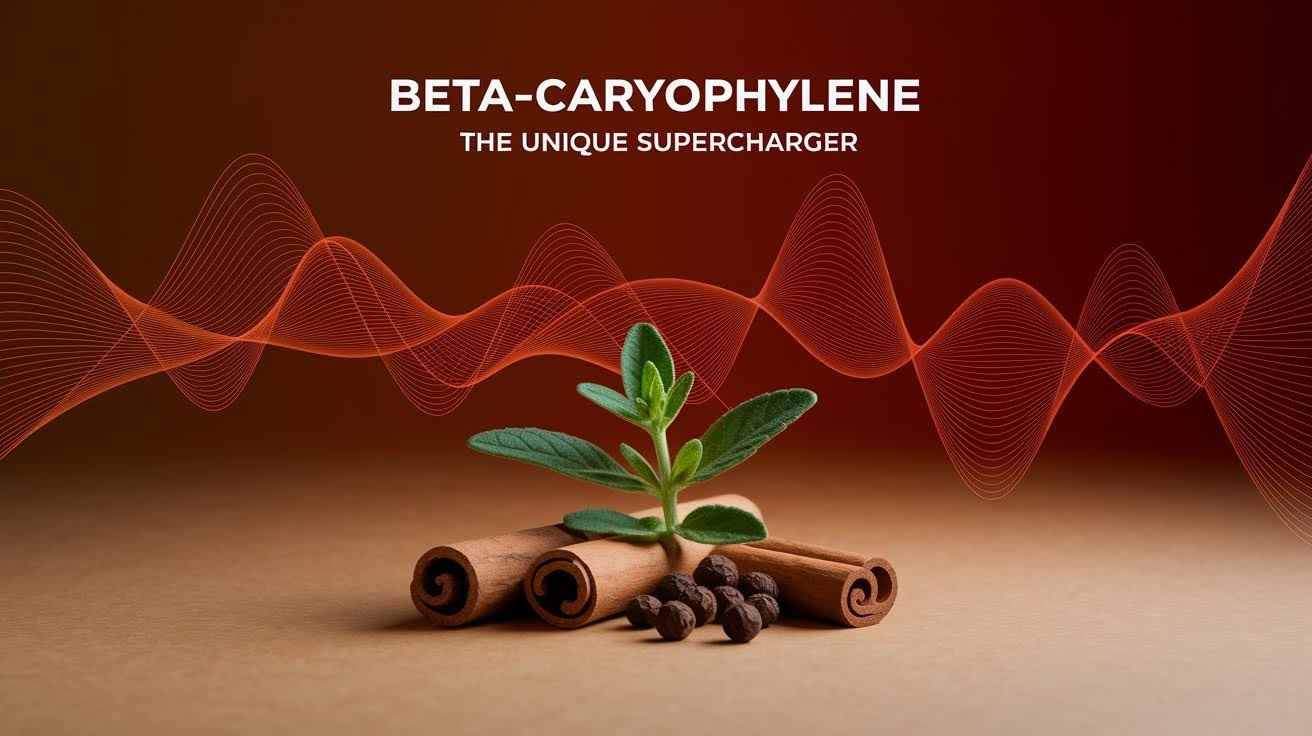
Beta-caryophyllene is the rebel of the terpene world. It breaks every rule by actually binding to your body’s cannabinoid receptors. No other terpene can make this claim.
The smell hits your nose like a spice rack. Think black pepper mixed with warm cinnamon. You’ve encountered this before – every time you crack black pepper or smell fresh oregano.
The boiling point is surprisingly low at 222.8°F. This means it evaporates quickly if you’re not careful with the temperature.
I’ve watched this terpene work magic as a supercharger. Think of it as a volume knob for your cannabis experience. Caryophyllene turns up intensity without changing core effects.
The relaxation comes through stress reduction, tension melting away from your shoulders. Research shows promising antioxidant and anti-inflammatory benefits.
Popular strains: Girl Scout Cookies, GG#4, Gelato, Sour Diesel.
3. Limonene
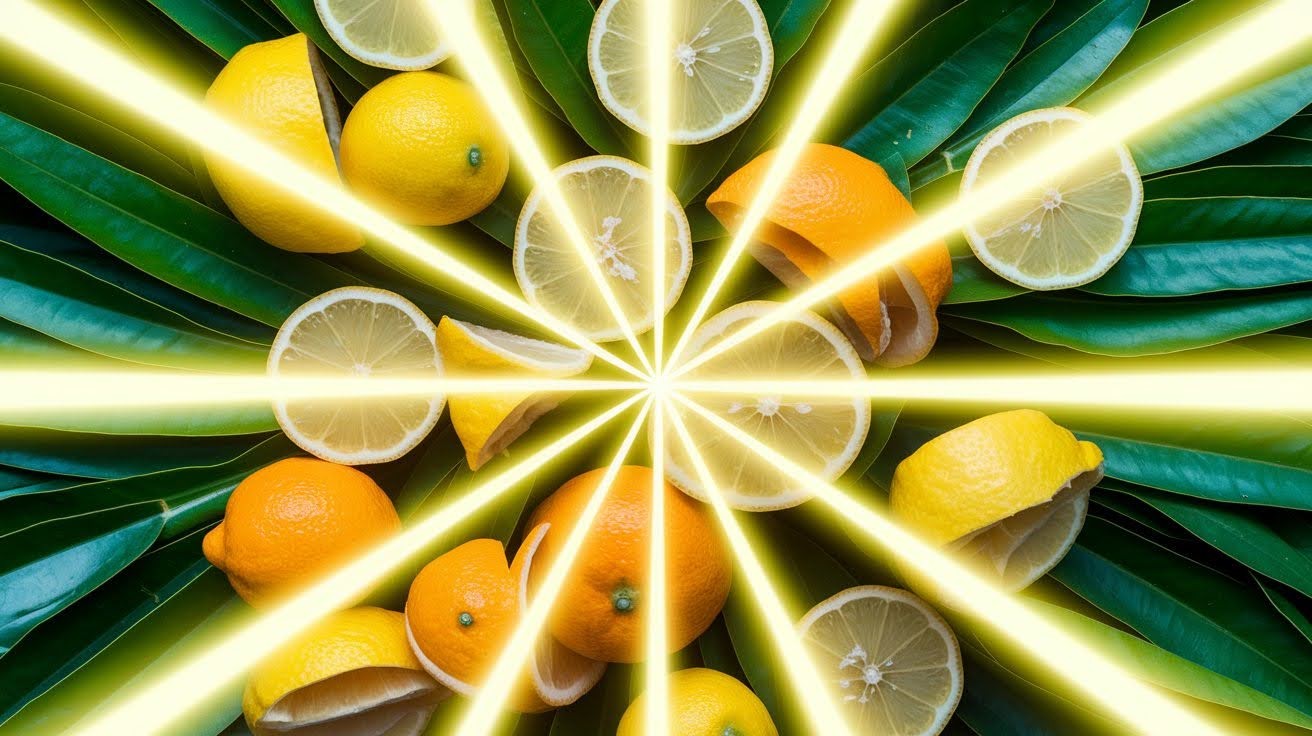
Limonene is happiness in molecular form. This terpene ranks as one of the three most common in cannabis. One whiff and your mood starts lifting.
The aroma screams fresh citrus – lemon peels, orange zest, grapefruit rinds. The boiling point hits 348.8°F, so it survives most consumption methods well.
I’ve seen people transform after consuming limonene-heavy strains. From tired and grumpy to alert and cheerful in minutes. This terpene energizes without jitters while somehow calming worried minds.
The cerebral effects feel almost euphoric. Your thoughts become clearer, and creativity flows more easily. Research suggests immune support, neuroprotection, and anti-inflammatory benefits.
Popular strains: Lemon Berry Kush, Do-Si-Dos, Wedding Cake, Quantum Kush, Berry White.
4. Pinene

Pinene wins the popularity contest in nature. It’s the most abundant terpene on Earth thanks to its two forms working together. Walk through any forest and you’re swimming in pinene.
Alpha-pinene smells like fresh pine trees and earthy forest floors. Beta-pinene gets more complex with woody, spicy notes like basil or dill. The boiling point hits 311°F, so most consumption methods preserve it well.
I’ve noticed pinene strains create laser-sharp focus, not scattered energy, but mental clarity with direction. The alertness feels clean and sustainable with improved memory retention.
The breathing benefits surprise many users. Pinene acts as a bronchodilator, opening airways naturally. It’s like taking a deep breath in a pine forest.
Research shows neuroprotection potential, antioxidant effects, and anti-bacterial properties.
Popular strains: OG Kush, Blue Dream, Haze Berry varieties.
5. Linalool
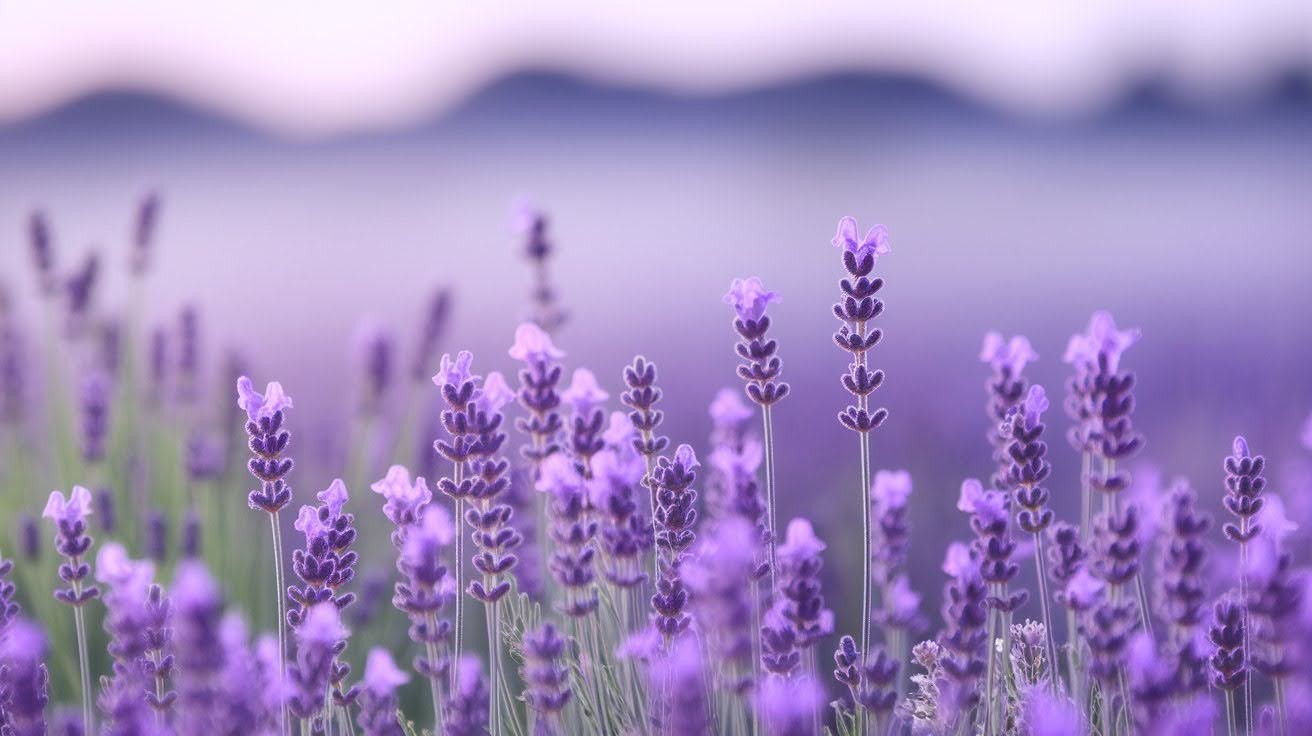
Linalool is a spa treatment of cannabis terpenes. If you’ve ever felt instantly calmer walking into a lavender field, you’ve experienced this terpene’s power firsthand.
The aroma hits like a luxury spa. Strongly floral with that unmistakable lavender scent. Some people describe it as sweet and perfume-like. You’ll recognize it immediately.
This is aromatherapy’s golden child for good reason. Spas worldwide use linalool for relaxation treatments. Now, cannabis brings that same calming magic to your evening routine.
The stress-melting effects feel almost instant. I’ve watched tense people physically relax within minutes of consuming linalool-rich strains. Their shoulders drop, their breathing deepens. It’s like watching someone step out of a hot bath.
The relaxation quality differs from myrcene’s couch-lock. Linalool calms without heavy sedation. You feel peaceful but still functional.
Research backs up what users already know. Dozens of studies explore linalool’s potential as an antidepressant. Pain relief properties show promise, too.
Neuroprotective benefits could explain why linalool feels so mentally soothing. Your brain gets a break from stress. You’ll find linalool starring in:
Lavender Dream for obvious reasons. Amnesia Haze delivers surprising floral notes despite its energizing reputation. Look for strains with “lavender” in the name – they usually pack serious linalool content.
6. Terpinolene
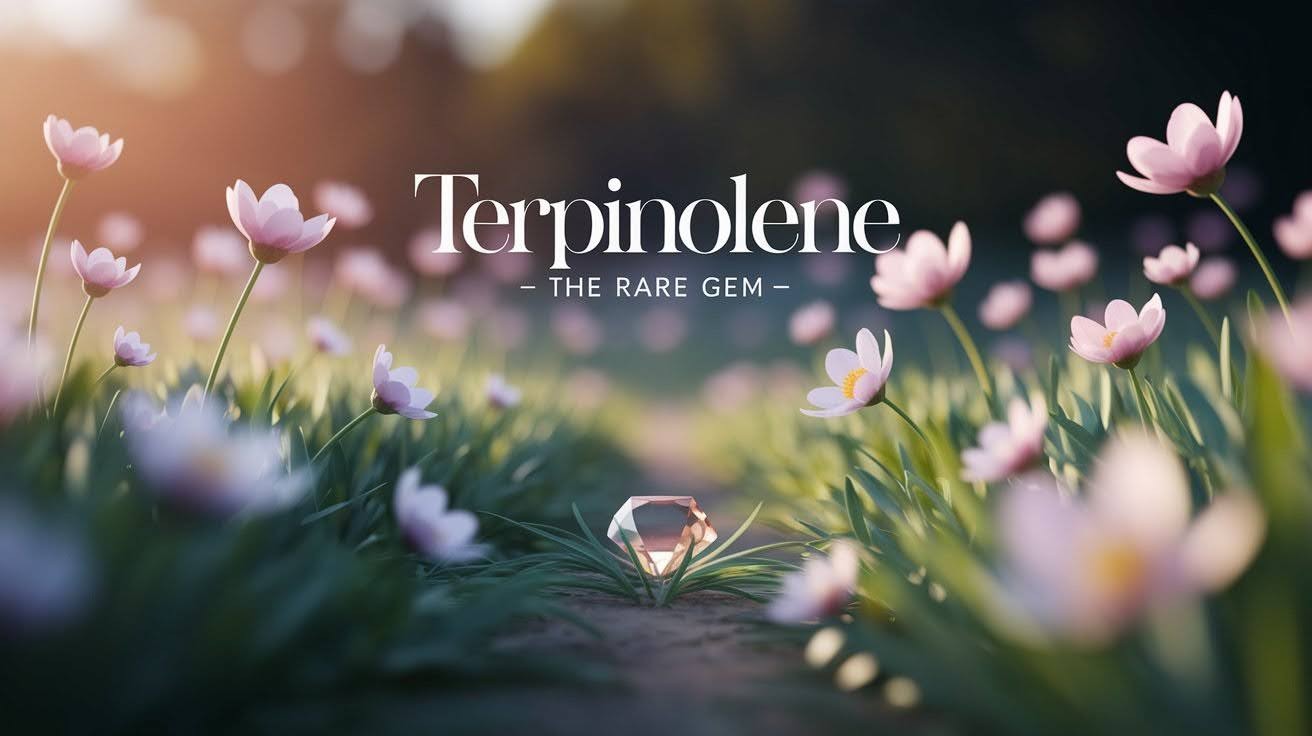
Terpinolene is the unicorn of cannabis terpenes. Rare but incredibly sought-after by those who know what they’re looking for. Finding a terpinolene-dominant strain feels like understanding treasure.
The scent confuses people at first. Fresh like spring air, floral like a garden, woodsy like hiking trails. It’s complex in ways that make you keep sniffing to figure it out.
You’ll find terpinolene hiding in apples, sage, and parsnips. Most cannabis strains contain tiny amounts, usually well under 1%. But here’s why people hunt for terpinolene strains.
The effects hit the sweet spot between energy and relaxation. I’ve watched people describe it as “lifted” rather than sedated. You feel calm but not glued to the couch.
It’s like finding the perfect middle ground between myrcene’s heavy relaxation and limonene’s energizing buzz. Terpinolene gives you both without the extremes.
The enhancement properties intrigue researchers. This terpene seems to amplify whatever else is happening in your strain without overpowering the experience.
Antioxidant properties add to its appeal for health-conscious users. You’ll find terpinolene starring in these legendary strains:
Jack Herer and Durban Poison. Both are famous for their unique, uplifting effects that terpinolene helps create. When you find a terpinolene-heavy strain, grab it. They don’t come around often.
7. Humulene
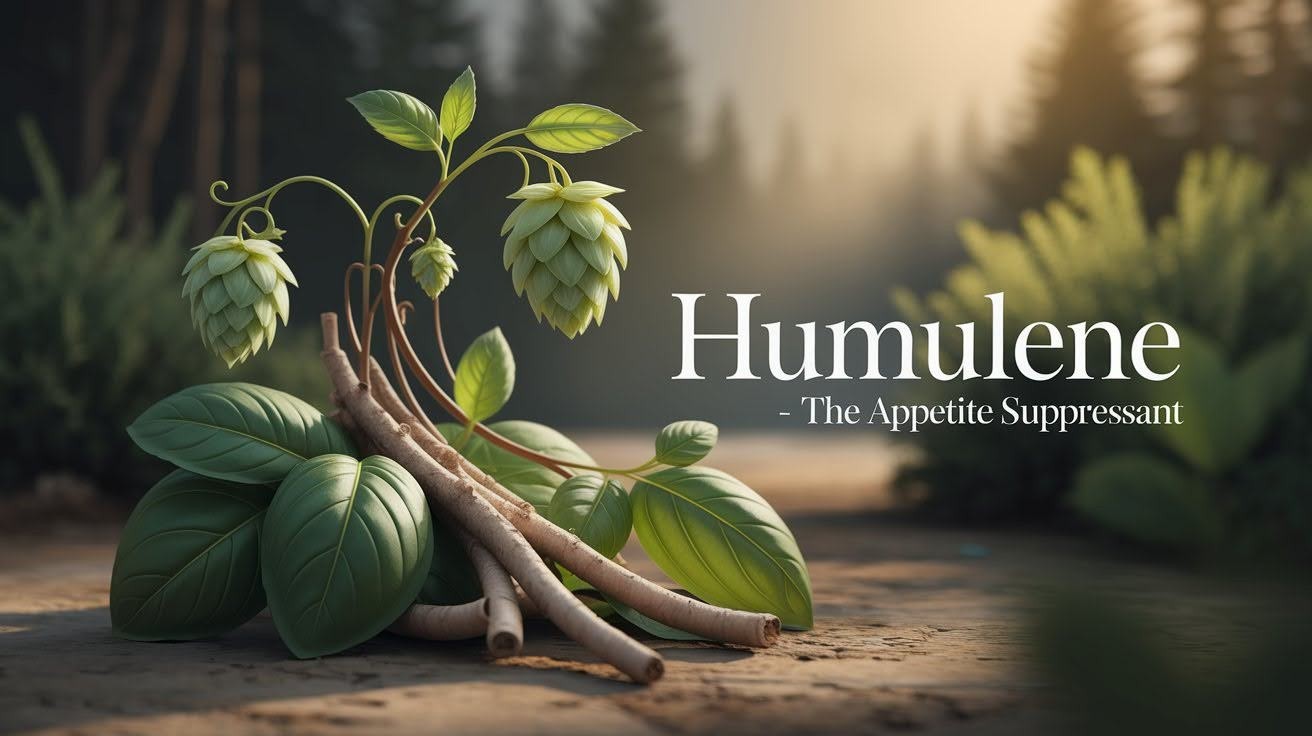
Humulene breaks cannabis stereotypes. While most terpenes either relax you or energize you, humulene reduces your appetite. No munchies here.
The aroma screams brewery – earthy and herbal with spicy undertones. Think hops mixed with fresh basil. Beer lovers already know this terpene well from hops.
You’ll also find it in ginseng and fresh ginger, natural sources that explain humulene’s appetite-suppressing reputation.
Pairing with caryophyllene creates magic. I’ve noticed these two terpenes amplify each other’s effects in ways single terpenes can’t match.
The sedation feels gentle rather than overwhelming – more like comfortable relaxation than couch-lock. Pain relief stands out as humulene’s strongest suit with anti-inflammatory benefits.
The appetite suppression surprises many users. Instead of raiding the kitchen, you might forget to eat entirely.
Popular strains: Sour Diesel for that classic diesel aroma, and Gelato despite its sweet name.
Conclusion
This comprehensive list of terpenes and effects gives you the knowledge to choose strains based on exactly how you want to feel. No more guessing why one strain energizes while another puts you to sleep.
You now understand how myrcene creates couch-lock, limonene lifts your mood, and pinene sharpens focus. The mystery behind strain effects is solved – it’s all about the terpene profiles.
Start experimenting with single-terpene dominant strains to understand your personal preferences. Track what works and what doesn’t. Everyone responds differently to terpenes.
What’s your favorite terpene learning so far? Share your experiences in the comments below – your insights could help fellow cannabis enthusiasts find their perfect match.
Happy exploring, and may you find the exact effects you’re seeking.
Frequently Asked Questions
What are the most common terpenes and their effects in cannabis?
The most common terpenes are myrcene (sedating, couch-lock), limonene (energizing, mood-lifting), pinene (focus, alertness), beta-caryophyllene (stress relief, enhancement), and linalool (calming, spa-like relaxation). These five terpenes dominate most cannabis strains and create the foundation for different strain effects.
How do terpenes affect the cannabis high differently from THC?
Terpenes modify and supercharge THC effects through the “entourage effect.” While THC provides the psychoactive base, terpenes determine whether you feel energized, relaxed, focused, or sleepy. They work together to create each strain’s unique experience beyond just potency levels.
Which terpenes are best for energy and focus?
Limonene provides energizing, mood-lifting effects perfect for daytime use. Pinene supercharges focus and alertness while improving memory retention. These terpenes are commonly found in sativa-dominant strains and help create cerebral, productive experiences without sedation.
What terpenes help with relaxation and sleep?
Myrcene is the king of relaxation, creating “couch-lock” effects ideal for nighttime use. Linalool provides spa-quality calming without heavy sedation. Humulene offers gentle relaxation with pain relief. These terpenes dominate indica strains and evening-use products.
How can I find out which terpenes are in my cannabis products?
Check the Certificate of Analysis (CoA) – lab results that list terpene profiles by percentage. Most dispensaries provide these upon request. Look for products with clear terpene labeling, and start tracking which profiles work best for your desired effects.

